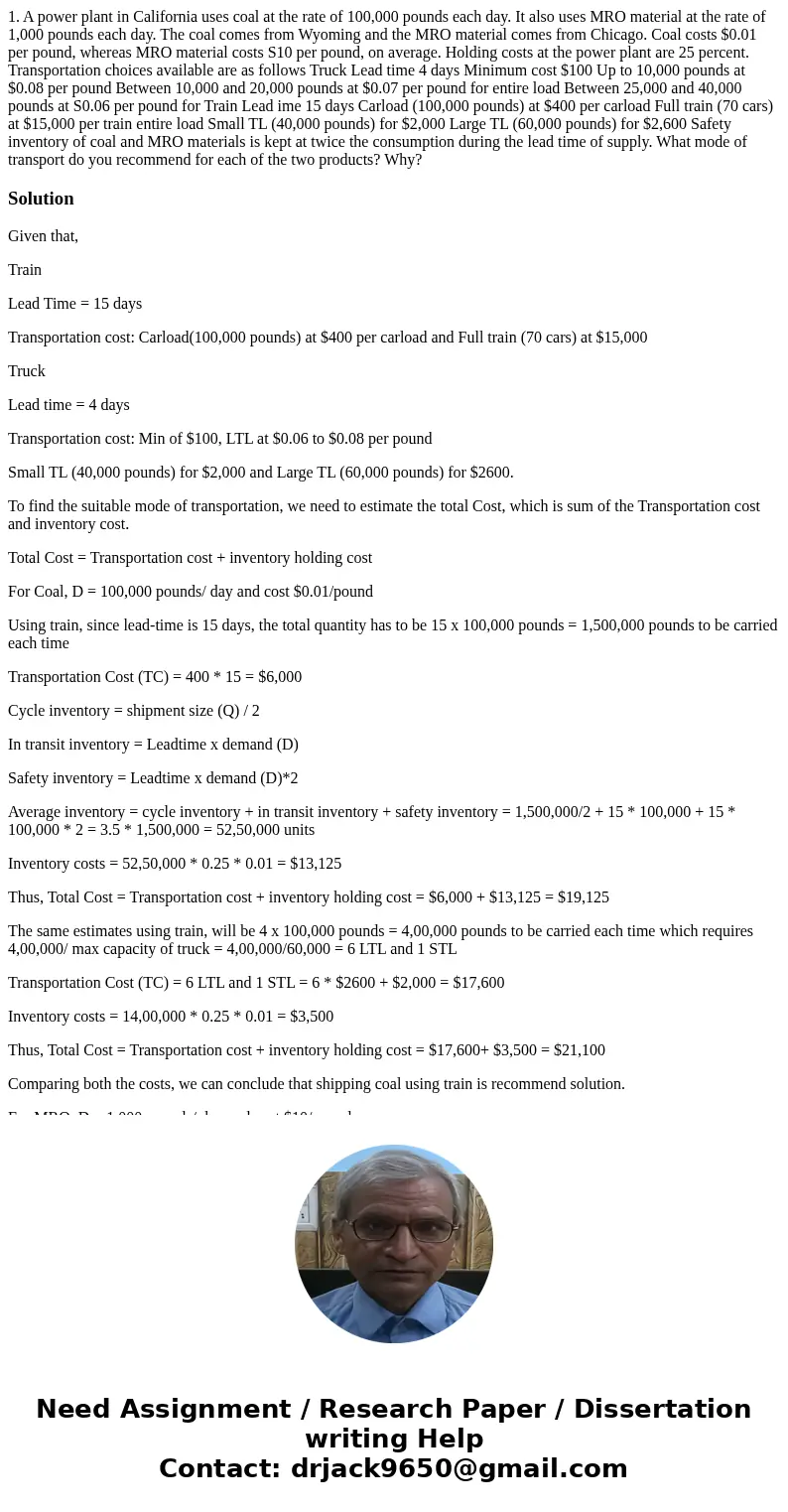1 A power plant in California uses coal at the rate of 10000
Solution
Given that,
Train
Lead Time = 15 days
Transportation cost: Carload(100,000 pounds) at $400 per carload and Full train (70 cars) at $15,000
Truck
Lead time = 4 days
Transportation cost: Min of $100, LTL at $0.06 to $0.08 per pound
Small TL (40,000 pounds) for $2,000 and Large TL (60,000 pounds) for $2600.
To find the suitable mode of transportation, we need to estimate the total Cost, which is sum of the Transportation cost and inventory cost.
Total Cost = Transportation cost + inventory holding cost
For Coal, D = 100,000 pounds/ day and cost $0.01/pound
Using train, since lead-time is 15 days, the total quantity has to be 15 x 100,000 pounds = 1,500,000 pounds to be carried each time
Transportation Cost (TC) = 400 * 15 = $6,000
Cycle inventory = shipment size (Q) / 2
In transit inventory = Leadtime x demand (D)
Safety inventory = Leadtime x demand (D)*2
Average inventory = cycle inventory + in transit inventory + safety inventory = 1,500,000/2 + 15 * 100,000 + 15 * 100,000 * 2 = 3.5 * 1,500,000 = 52,50,000 units
Inventory costs = 52,50,000 * 0.25 * 0.01 = $13,125
Thus, Total Cost = Transportation cost + inventory holding cost = $6,000 + $13,125 = $19,125
The same estimates using train, will be 4 x 100,000 pounds = 4,00,000 pounds to be carried each time which requires 4,00,000/ max capacity of truck = 4,00,000/60,000 = 6 LTL and 1 STL
Transportation Cost (TC) = 6 LTL and 1 STL = 6 * $2600 + $2,000 = $17,600
Inventory costs = 14,00,000 * 0.25 * 0.01 = $3,500
Thus, Total Cost = Transportation cost + inventory holding cost = $17,600+ $3,500 = $21,100
Comparing both the costs, we can conclude that shipping coal using train is recommend solution.
For MRO, D = 1,000 pounds/ day and cost $10/pound
Contrary to the coal, MRO has low demand and high unit cost, which makes the product to have short lead-time availability and lesser inventory.
Since, Truck can ship smaller quantities than the train while the minimum train carload capacity starts at 100,000 pounds, it is recommended to ship MRO using Truck.
Thanks.


 Homework Sourse
Homework Sourse